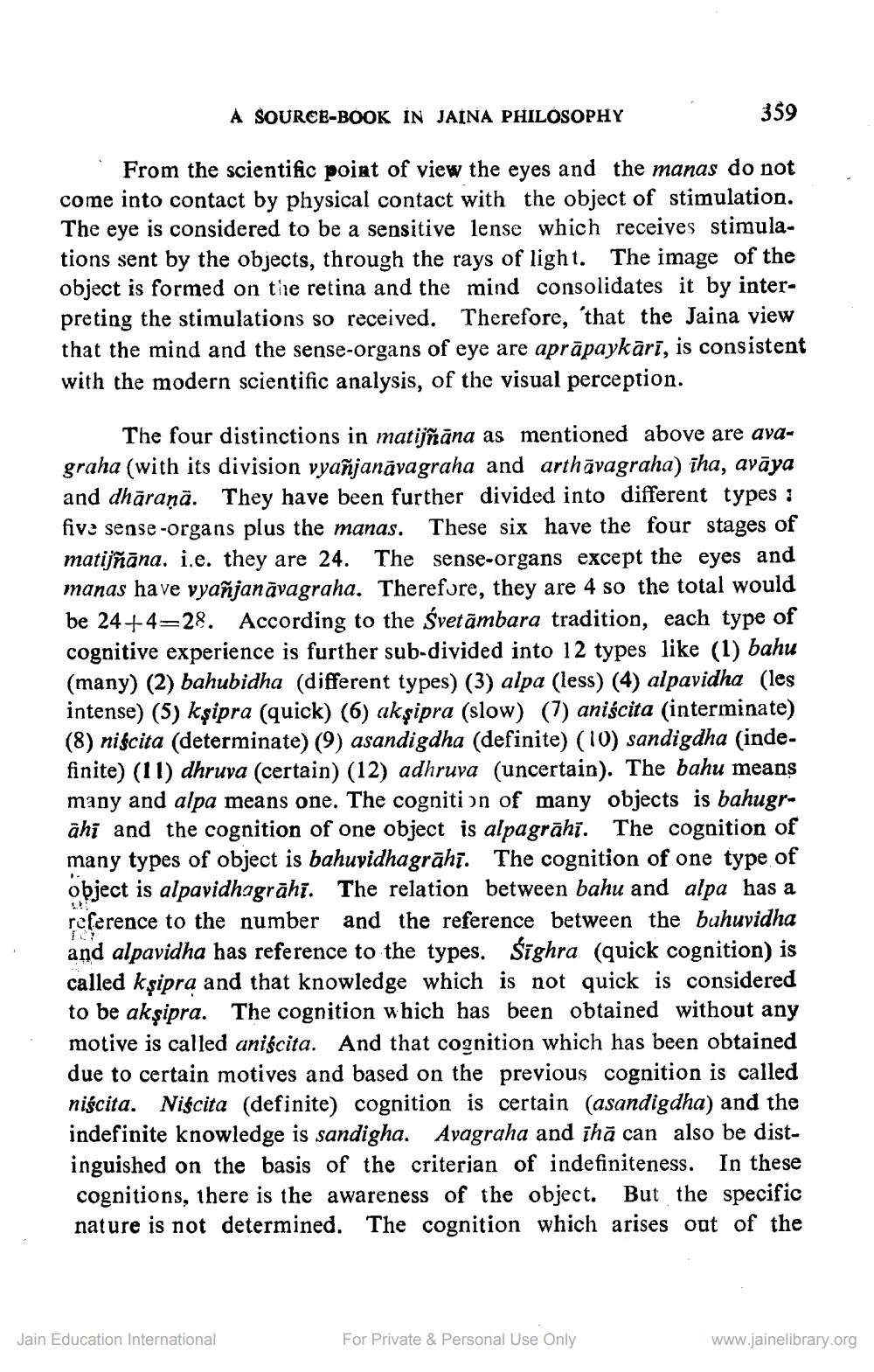________________
A SOURCE-BOOK IN JAINA PHILOSOPHY
359
From the scientific point of view the eyes and the manas do not come into contact by physical contact with the object of stimulation. The eye is considered to be a sensitive lense which receives stimulations sent by the objects, through the rays of light. The image of the object is formed on the retina and the mind consolidates it by interpreting the stimulations so received. Therefore, 'that the Jaina view that the mind and the sense-organs of eye are aprāpaykārī, is consistent with the modern scientific analysis, of the visual perception.
The four distinctions in matijñāna as mentioned above are avagraha (with its division vyañjanävagraha and arthāvagraha) iha, avāya and dhāraņā. They have been further divided into different types : five sense-organs plus the manas. These six have the four stages of matijñāna. i.e. they are 24. The sense-organs except the eyes and manas have vyañjan āvagraha. Therefore, they are 4 so the total would be 24+4=28. According to the Svetāmbara tradition, each type of cognitive experience is further sub-divided into 12 types like (1) bahu (many) (2) bahubidha (different types) (3) alpa (less) (4) alpavidha (les intense) (5) kşipra (quick) (6) aksipra (slow) (7) aniścita (interminate) (8) niệcita (determinate) (9) asandigdha (definite) (10) sandigdha (indefinite) (11) dhruva (certain) (12) adhruva (uncertain). The bahu means many and alpa means one. The cognition of many objects is bahugrāhi and the cognition of one object is alpagrāhi. The cognition of many types of object is bahuvidhagrāhī. The cognition of one type of object is alpavidhagrāhī. The relation between bahu and alpa has a reference to the number and the reference between the buhuvidha and alpavidha has reference to the types. Śighra (quick cognition) is called kşipra and that knowledge which is not quick is considered to be akşipra. The cognition which has been obtained without any motive is called aniścita. And that cognition which has been obtained due to certain motives and based on the previous cognition is called niścita. Niścita (definite) cognition is certain (asandigdha) and the indefinite knowledge is sandigha. Avagraha and īhā can also be distinguished on the basis of the criterian of indefiniteness. In these cognitions, there is the awareness of the object. But the specific nature is not determined. The cognition which arises out of the
Jain Education International
For Private & Personal Use Only
www.jainelibrary.org




